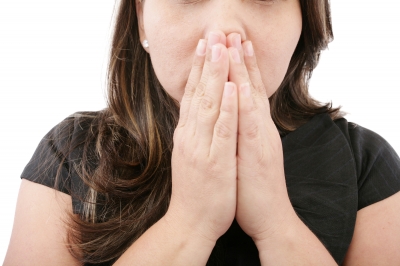 In Part 1 of this series, we took a look at the impact anxiety can have on the body as a cause or accelerant of pain or illness.
In Part 1 of this series, we took a look at the impact anxiety can have on the body as a cause or accelerant of pain or illness.
In Part II, we will examine some causes of anxiety, with hopes of helping you to identify where and how your symptoms may be coming from.
Anxiety can present in many forms. There may be clear, easy-to-identify causes (e.g. deadlines at work, an exam coming up, conflict with peers, etc.), or the causes may be more hidden and undetectable. In fact, a person may be so used to running anxious, that they don’t even realize they are operating in this heightened state.
The following is a list of the various anxious conditions one can experience and an overview of their symptoms. Identifying just what type of anxiety you may be experiencing can help determine just how to make it better:
Specific Phobias
A phobia is an irrational fear of a specific thing or situation. Now, in the suburbs of Chicago, it is not likely that Ophiophobia (a fear of snakes) or Acrophobia (a fear of heights) would be activated on any regular schedule, so this is not likely causing physical illness. But if one suffers from Glossophobia (a fear of public speaking), for example, and has to give regular presentations at work, this could be a chronic problem that leads to physical symptoms. If you have a fear of crowds, dogs, leaving your home, or fears of anything else that you encounter regularly, it is a good idea to look into ways to overcome these. Fear may have more of an impact on your life and well-being than you know.
Social Anxiety Disorder
The causes or symptoms of social anxiety vary from person to person. Many experience difficulty when making eye contact with others, approaching others, being around authority figures or worrying about what to say in conversations. There can also be more extreme cases, like being unable to order a pizza due to fear of bothering or upsetting the person at the other end of the line. Social anxiety can be overwhelming, all-consuming and can lead to digestive issues and other physical health problems.
Post-Traumatic Stress Disorder (PTSD)
Most often identified with soldiers who have witnessed or experienced terrible things while doing battle, PTSD can exist in a variety of forms and have a variety of causes: anyone who has experienced a traumatic event is susceptible. A person suffering from PTSD will relive a trauma, varying from infrequent reminders of the event to everyday flashbacks and nightmares. PTSD can cause a variety of physical illness and should be monitored in conjunction with medical treatment.
Panic Disorder
Panic disorder can have a similar feel to PTSD (unprovoked feelings of terror, sweating, rapid heartbeat, dizziness, etc.), but does not appear to have a known cause. Those who lived in high-intensity situations as children, such as abusive households or warzones, can be prone to panic, but it can effect others who have no trauma history, as well.
Generalized Anxiety Disorder
One of the most common experiences of anxiety, Generalized Anxiety is identified by excessive worry about money, safety, health, relationships or any other aspects of day to day life. It is often tied to headaches, nausea, shortness of breath, pain, fatigue and insomnia.
Obsessive Compulsive Disorder (OCD)
A person suffers from OCD when they have an obsessive thought (i.e. a fear of germs one might see in Generalized Anxiety Disorder), which they combine with an action to try to avoid the consequence of that fear (i.e. repeated hand-washing). Some of the more common fears and compulsions are: leaving something on at home and needing to go in to check it every time you go out, avoiding certain “bad luck” numbers or needing to knock / tap on something to bring good luck or avoid bad luck.
Other Causes
Outside of specific anxious conditions, anxiety can be caused by all sorts of other things. Big life events, like marriage or children, can cause a person to be anxious. Being unhappy at work or at home can cause stress. Adjusting to a new job, new place to live, planning events like trips or parties, etc. – One can encounter anxiety almost anywhere
So… What now?
If you feel you may be suffering from one of these conditions, there is hope. In Part III of this series, we will look at ways to address and treat symptoms of anxiety on your own. Or, if you’d like to talk with someone before then, feel free to Contact Us. We’re here to help and would be happy to get you on the right track to conquering these fears and ailments.

